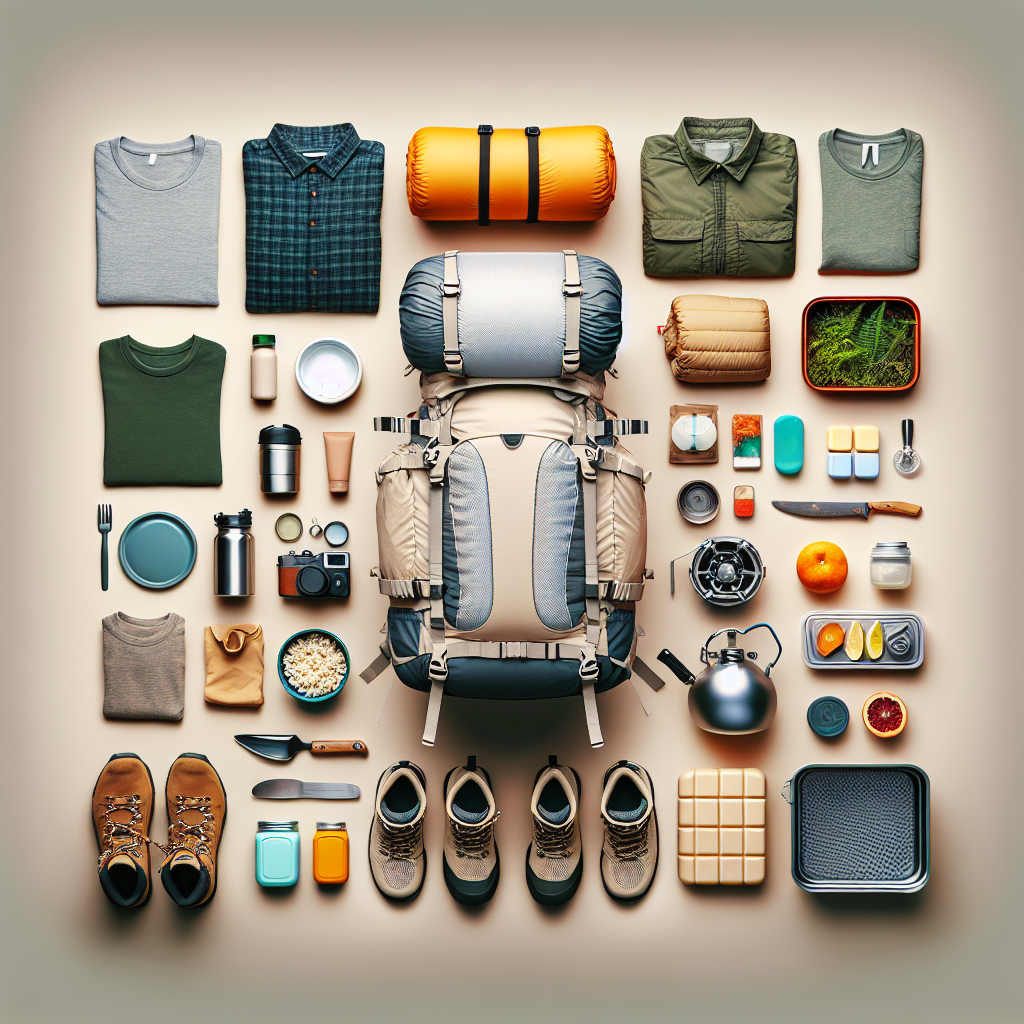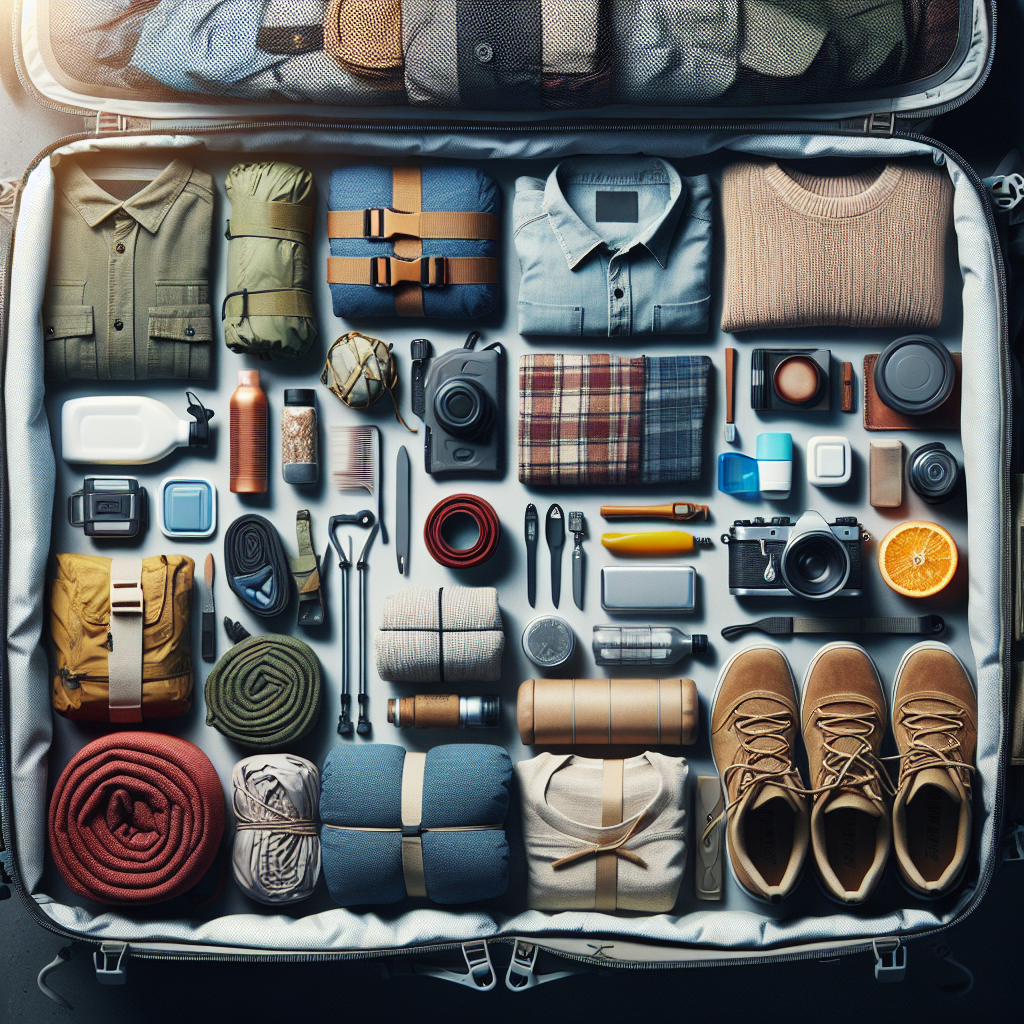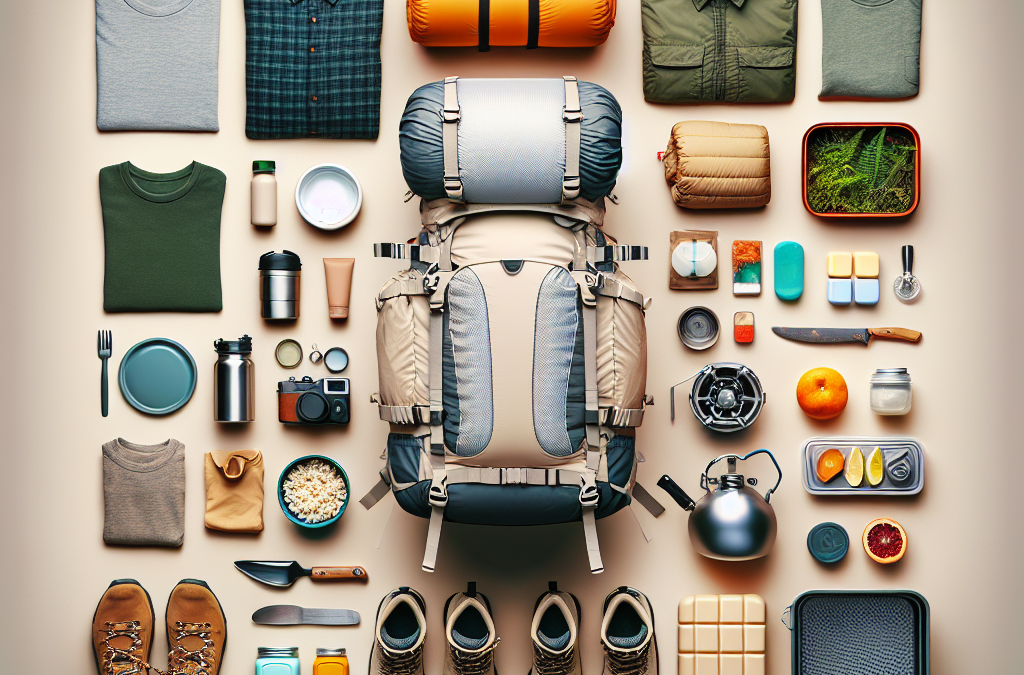Embarking on a thrilling backpacking journey embraces the spirit of adventure, but it starts with a significant step – packing. Navigating the fine line between necessity and excess can be quite a challenge. Yet, here at TrailTrekTribe, your adventure is our passion, and we’re dedicated to making it as smooth and enjoyable for you as possible. So, sit back, relax, and allow us to guide you on how to pack light for your next backpacking trip. We’ll take into account essential factors such as the weather, terrain, and personal needs, drawing on real-life experiences and reliable advice. With these handy tips, you’ll be fully equipped, while maintaining that all-so-important lightness that can make or break your exploring spree into the wild and untamed beauty of nature. So, get ready to go lite, right, and embrace the thrill of the great outdoors!
Understanding the Importance of Packing Light
Whether you’re a seasoned backpacker or embarking on your first outdoor adventure, understanding the importance of packing light cannot be overstated. Packing lighter offers numerous benefits, all contributing to a comfortable and enjoyable adventure.
The benefits of a lighter backpack
A lightweight backpack means freedom. Less weight on your back translates to easier navigation through different terrains. It allows you to enjoy the environment around you without the discomfort of lugging around a heavy burden. A lighter backpack also implies less strain and fatigue on your body, enhancing your overall stamina and energy levels.
Potential risks of overpacking
On the opposite side of the spectrum, overpacking poses several challenges. Too much weight can lead to an increased risk of injury, particularly to areas like your back and knees. Overpacked bags can compromise your balance, making you more susceptible to slips or falls. Ultimately, it can also diminish your hiking experience, as you may have to compromise on distance or speed.
Impact of excess weight on your hiking experience
Excess weight can significantly impact your hiking experience. It can quickly turn an exhilarating adventure into a burdensome ordeal. Each additional pound can feel like a ton when you’re navigating steep trails or crossing long distances. It can rob you of the joy of observing nature in its full splendor, as your focus shifts to the weight on your back.
Identifying Essential Backpacking Gear
Recognizing the importance of packing light is one thing, but putting it into practice requires careful planning. The key lies in discerning between essential and superfluous items.
Necessity of clothing items
Think layers when it comes to clothing. Opt for lightweight and quick-drying fabrics that can also provide warmth when it gets chilly. There’s no need for a fresh set of clothes each day – reusing and recycling can help save some valuable space and weight.
Choosing your cooking equipment
A multi-use, lightweight stove will serve most of your cooking needs while on the trail. Opt for compact pots and utensils. Remember to pack only the amount of fuel you’ll need for the trip.
First-Aid and survival essentials
Never compromise on safety. Include a basic first-aid kit, a firestarter, a knife, and a compass in your pack. Despite being weight-conscious, these items shouldn’t be skipped.

Opting for Lighter Gear Alternatives
Being smart about the gear you pick for your trip can shave off some significant weight from your backpack.
Investing in lightweight travel gear
Invest in versatile gear that is designed with a focus on weight and compactness. From lightweight sleeping bags and tents to travel-sized toiletries, these investments are worth their weight in gold, or in this case, lack of weight.
Single-purpose vs multi-purpose equipment
Whenever possible, opt for multi-purpose gear. A spork, for instance, can double as a spoon and a fork. Not only does this save weight, it also saves valuable pack space.
Converting your gear to lighter alternatives
Consider swapping out heavier items in your pack for lighter alternatives. For example, replace your bulky flashlight with a headlamp.
Weight-saving tips for your travel gear
Neglecting the minor details can lead to excess weight. For example, you can eliminate packaging from items beforehand or choose travel-sized toiletries.
Practicing Efficient Packing Habits
How you pack can be just as important as what you pack. Efficient packing habits can squeeze maximum utility out of the minimum weight.
Boots first or last: Deciding the packing order
The order in which you pack matters. Items that you need access to frequently (like food or a raincoat) should be easily accessible. Balance is key; distribute the weight evenly to prevent discomfort or imbalance.
Making use of every space
Make use of every inch of space in your bag. Stuff socks inside cooking pots or roll clothes tightly to take up less space.
The art of rolling clothes and packing in layers
Rolling your clothes instead of folding them takes up less space and also results in fewer wrinkles. Packing in layers helps maintain balance and makes unpacking and re-packing on the trail easier.

Staying Hydrated without Weighing Yourself Down
Maintaining hydration during your hike is crucial. However, water is heavy. So how does one strike the balance?
Using a portable water filter
Carrying a small, lightweight water filter can save you from carrying days’ worth of water. As long as there are water sources along your route, you can hydrate without the burden.
Choosing a lightweight hydration bladder
A hydration bladder helps evenly distribute the weight of the water and allows you to consume your water without having to stop and open your pack. To save weight, consider using a smaller capacity bladder and refill more often.
Planning your water sources
Do a little research on your route and know where your next water source is. This allows you to carry only as much water as you need to get to the next source.
Food Selection for a Lighter Pack
Food selection plays a crucial role in keeping your pack light. High-energy, lightweight foods should be your go-to.
Choosing energy-dense foods
Energy-dense foods like nuts, dry fruits, and jerky provide a lot of calories without adding much weight. Complex carbohydrates and proteins can keep your energy levels steady throughout the day.
Reducing food packaging
Remove any excess packaging before hitting the trail. This saves weight and also reduces the amount of waste you’ll need to carry back out.
Practice portion control
By carefully planning and measuring your portions, you can ensure no food goes to waste. There’s no point in carrying weight that you won’t consume.
Reducing Accessories and Extras
In pursuit of comfort, you might be tempted to pack in some extra luxuries. However, learning to trim these additions can have a big effect on the weight of your pack.
Determining what counts as ‘luxury’
Luxury items might include a pillow, an extra pair of shoes, or a book. While these might make your trip more comfortable, they might also lead to unnecessary weight. Evaluate and consider if the added comfort is worth the added weight.
Alternatives to common heavy items
Consider alternatives to common heavy items. For example, a lightweight hammock could replace a heavier tent, or a kindle could carry multiple books without the extra weight.
Benefits of minimalism in backpacking
Adopting a minimalist approach in backpacking doesn’t just reduce weight—it can also lead to a richer outdoor experience. Fewer distractions can help you connect better with the environment.
Packing for Different Weather Conditions Without Adding Weight
Being prepared for unpredictable weather is crucial, yet challenging from a packing perspective. The key lies in versatility and adaptability.
Importance of checking the weather forecast
Stay updated with the latest weather forecasts for your hiking route. This can act as a guideline on what to pack and what to leave behind.
Packing for unexpected weather changes
Having layers that you can put on or take off as the temperature changes can save you from packing separate sets of clothes for different weather conditions.
Opting for versatile clothing items
Choose items that can serve multiple purposes. For example, a buff can be used as a hat, a scarf, a headband, or a face-covering.
Adjusting Your Mindset for Lightweight Backpacking
Lightweight backpacking is as much about a shift in mindset as it is about gear.
Embracing a ‘less is more’ approach
Adopt a minimalist mindset. Each object you pack should serve a purpose. If it doesn’t, leave it behind. You’ll find the experience liberating.
Differentiating between needs and wants
It’s essential to differentiate between what you need for survival and what you simply want for comfort or convenience. Focusing on needs will ensure you pack only the essentials.
Mental preparation for hardships
There will be challenges, and there will be discomforts. But remember, overcoming these is part of the experience. Prepare your mind to embrace this part of the adventure, too.
Evaluating Your Backpack’s Weight Post-Pack
Finally, before heading out, take some time to evaluate your packing efforts.
Doing a gear check
Do a final sweep through your gear to ensure you’ve included all essentials and nothing extra has sneaked in.
Testing the weight
Try on your backpack. Walk around a bit. If it feels too heavy or uncomfortable, it might be time to reassess your pack.
Making last-minute adjustments
Now is the time for last-minute tweaking. If the pack is too heavy, remove items until you reach a comfortable weight.
Going lightweight requires careful planning and thoughtful decision-making. But remember, at the end of the day, the goal is to enjoy your outdoor adventure. A lightweight backpack is merely a tool to help you achieve that goal. Happy backpacking!

